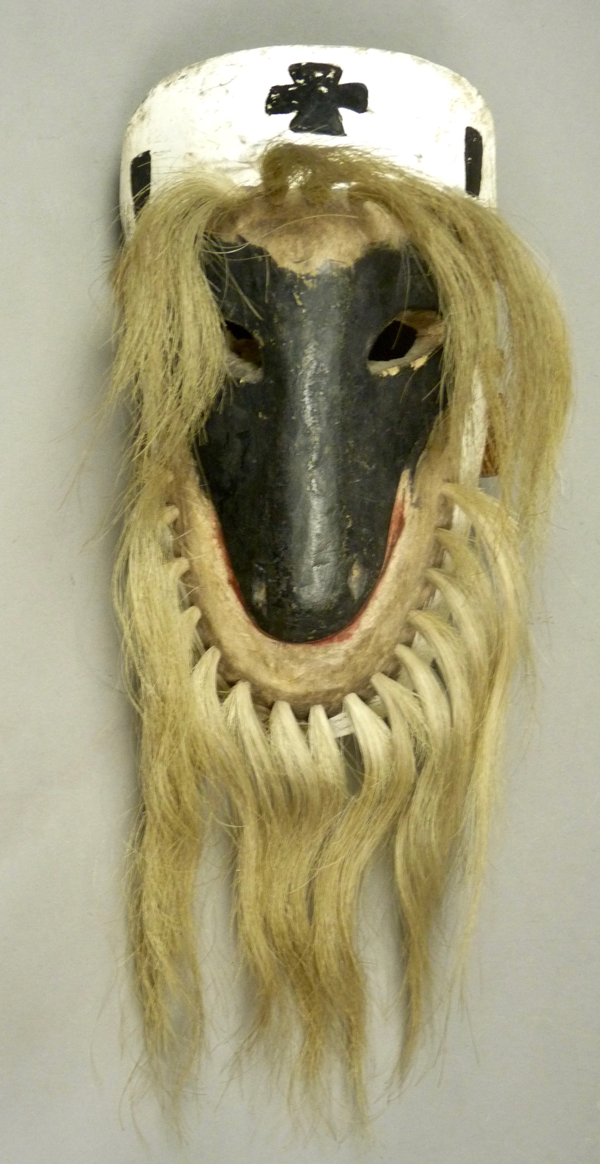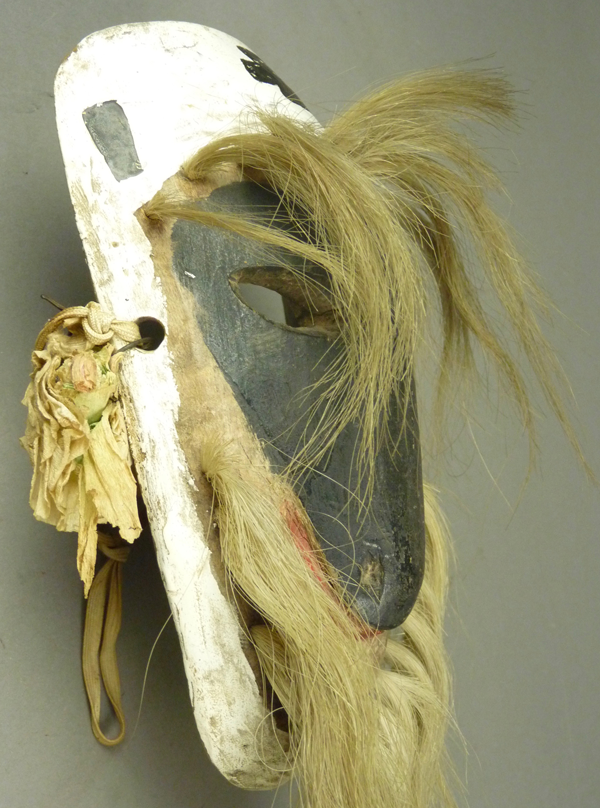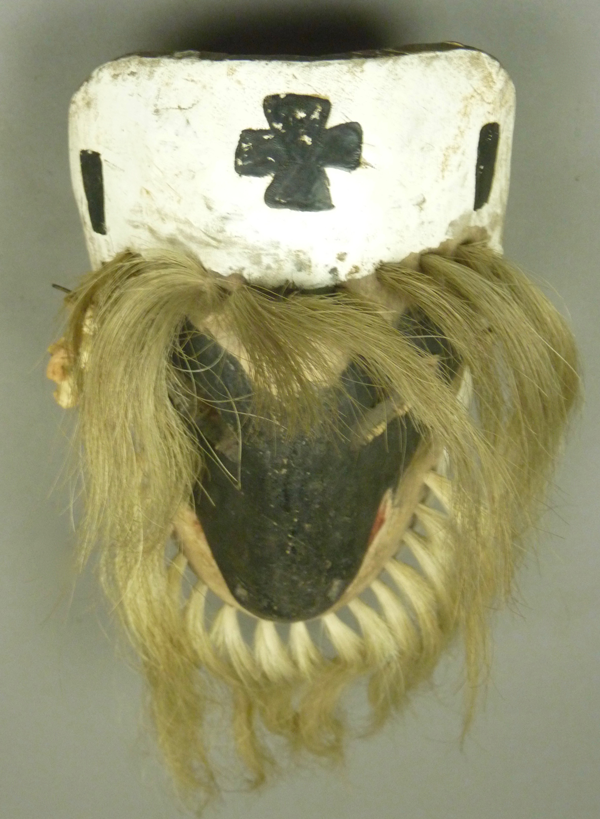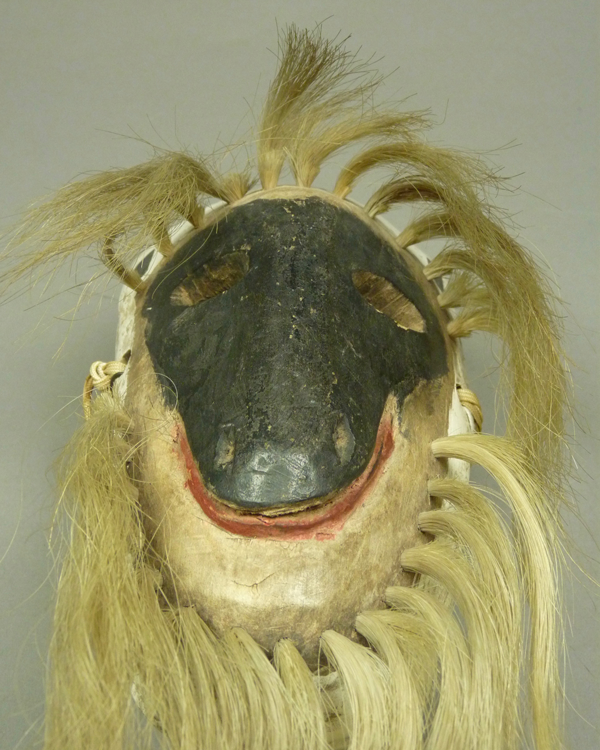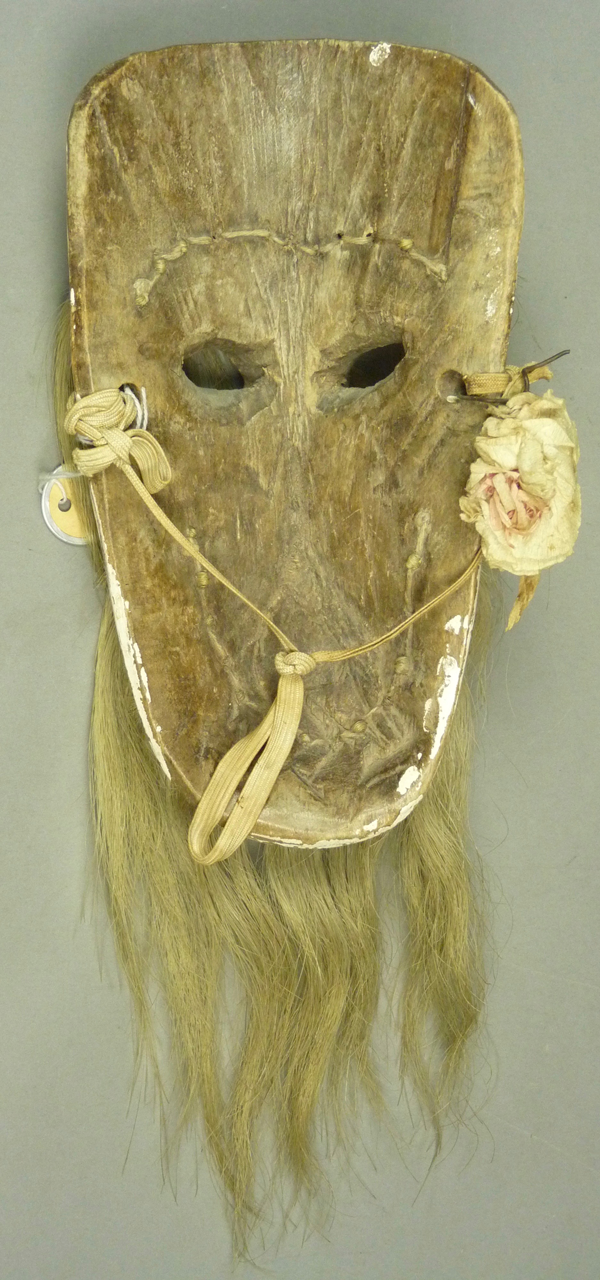Last week we looked at three old masks from the collection of Barney Burns and Mahina Drees that appear to have been carved by José Mopay, along with one that seemed somewhat newer. Those masks got me thinking about another mask, which is in my collection. Briefly, all five of these masks have an unusually elongated and tapered shape, compared to other Sinaloa Mayo masks.
In 1994 I purchased what appeared to be a very old Sinaloa Mayo mask from the Cavin-Morris Gallery in Manhattan. Although it has a similar shape to the Mopay masks, the top of the mask is flat with rounded corners, rather than softly rounded, although that is not so obvious from the first photo. Also, the back design is different than what one finds on the Mopay masks. I have concluded that my mask and the Mopay masks probably reflect an older Sinaloa tradition that has gone out of fashion. I present it in that spirit, as possible evidence of an earlier local style.
One thing that bears notice is that this mask was probably originally danced unpainted, and then later painted. This painting was done in a limited fashion, apparently to avoid getting paint on the hair bundles. I have seen this before on other older masks from Sinaloa. Evidently there was an earlier tradition of using stained Pascola masks there. In 1972, James Griffith wrote (“Cahitan Pascola Masks,” Kiva Vol. 37, No. 4, p195) “The typical Sinaloa pascola mask is either painted black or stained brown… Border and side designs are lacking on some masks, and when they are present, they tend to be incised and not painted.”
This mask has an elegantly simple goat’s nose and rudimentary painted horns.
The original stained surface remains on the chin and cheeks.
The back of this mask is dramatically stained from long and heavy use and the mask has an old worn strap..
Next week we will view a few Pascola masks by Rosario Cabanio.
Bryan Stevens

